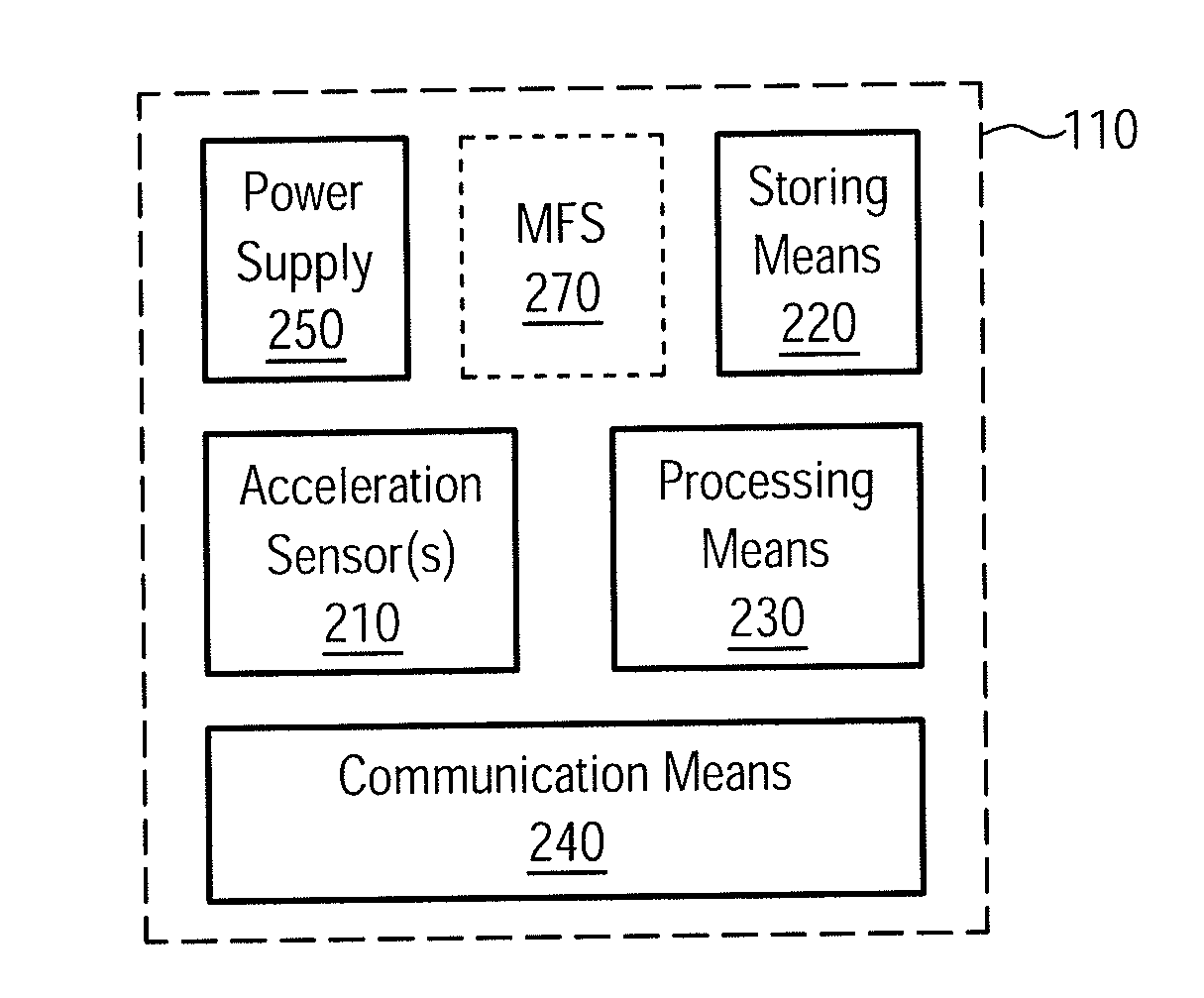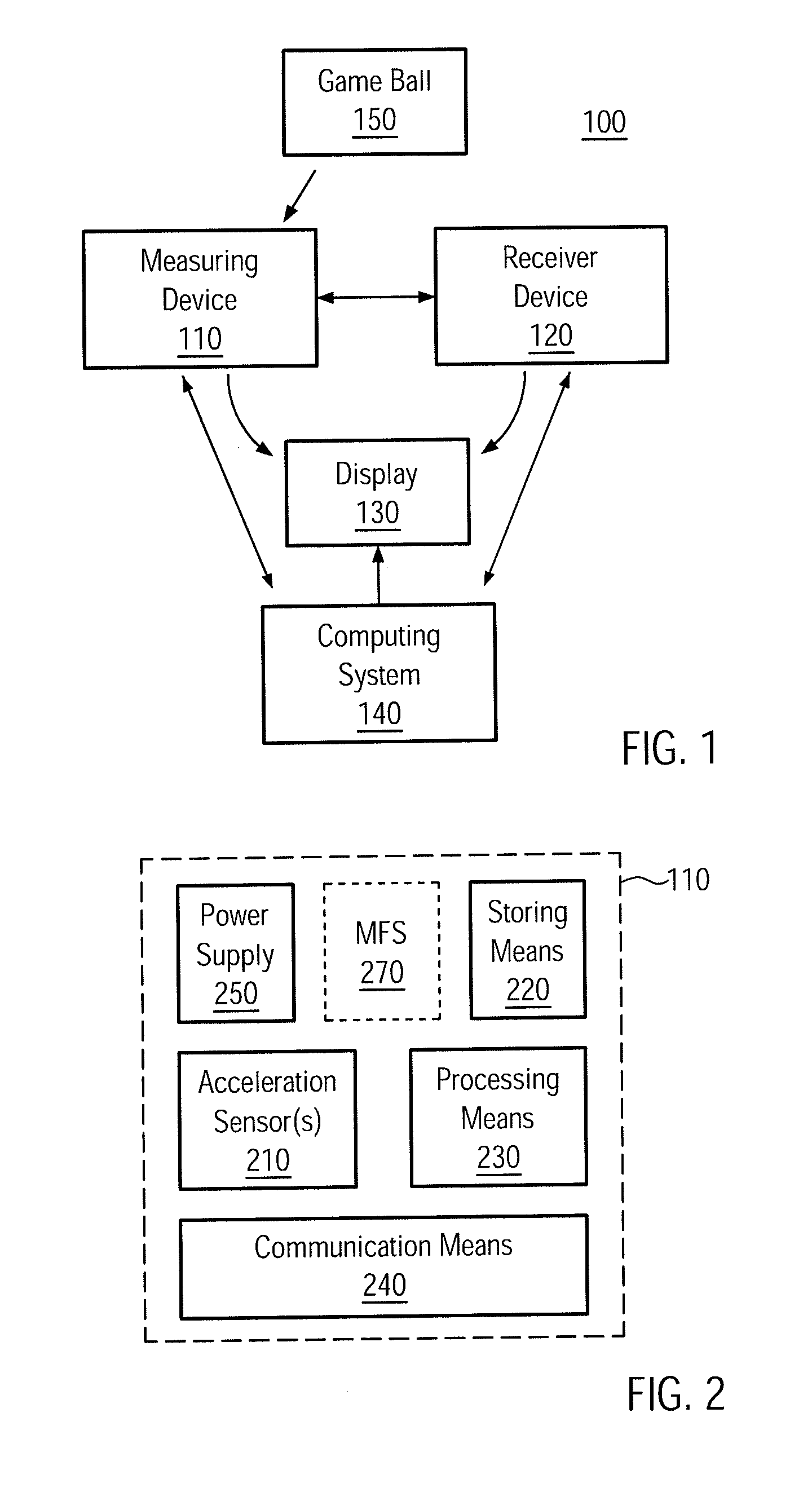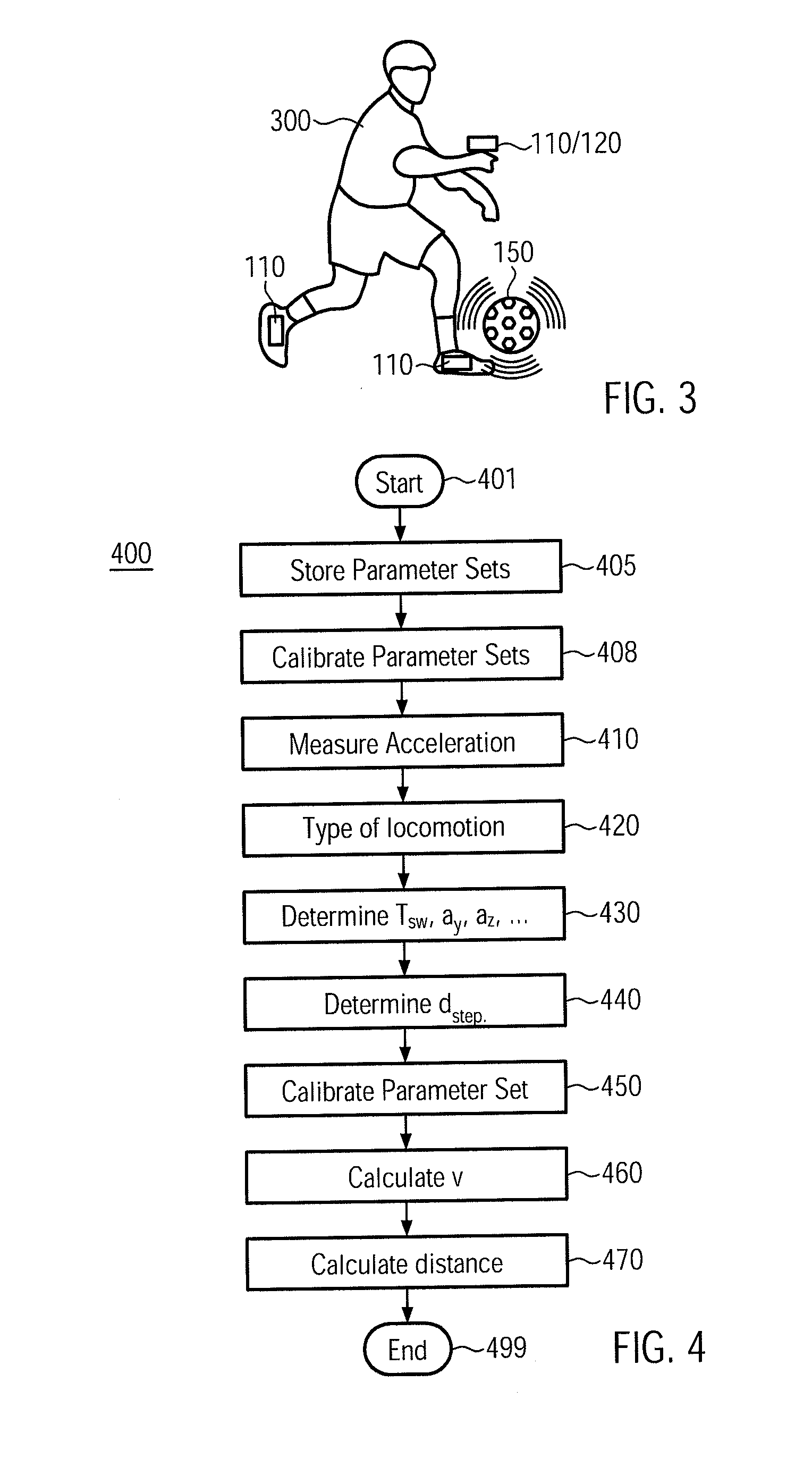Sensor-based Tracking of Variable Locomotion
a sensor-based tracking and variable technology, applied in surveying, navigation, using electrical/magnetic means, etc., can solve the problems of insufficient calibration by running a known distance, the assumption of simplified pedometers or simple running sensors no longer holds, and the application range of such pedometers cannot be widened. the effect of precise measurement results and efficient and simple manner
- Summary
- Abstract
- Description
- Claims
- Application Information
AI Technical Summary
Benefits of technology
Problems solved by technology
Method used
Image
Examples
Embodiment Construction
Exemplary embodiments of the present invention will now be described in detail with reference to the annexed drawings.
Referring to FIG. 1, the system 100 comprises a measuring device 110 for measuring movement of a person and, in particular, quantities related to the locomotion of a team sport player according to embodiments described below.
The measuring device is attached to a limb of the player and in some embodiments to a shoe of the team sport player. Alternatively, the measuring device 110 is attached to a wrist or the hip of the player. The system further comprises a receiver device 120, which may be separate from or integrated into the measuring device 110. If the receiver device is distinct from the measuring device, the measuring device 110 communicates measured data to the receiver device 120 by means of radio communication or other suitable short to mid-range communication signals. The system 100 further comprises a display means 130, which is separate from or, alternativ...
PUM
 Login to View More
Login to View More Abstract
Description
Claims
Application Information
 Login to View More
Login to View More - R&D
- Intellectual Property
- Life Sciences
- Materials
- Tech Scout
- Unparalleled Data Quality
- Higher Quality Content
- 60% Fewer Hallucinations
Browse by: Latest US Patents, China's latest patents, Technical Efficacy Thesaurus, Application Domain, Technology Topic, Popular Technical Reports.
© 2025 PatSnap. All rights reserved.Legal|Privacy policy|Modern Slavery Act Transparency Statement|Sitemap|About US| Contact US: help@patsnap.com



